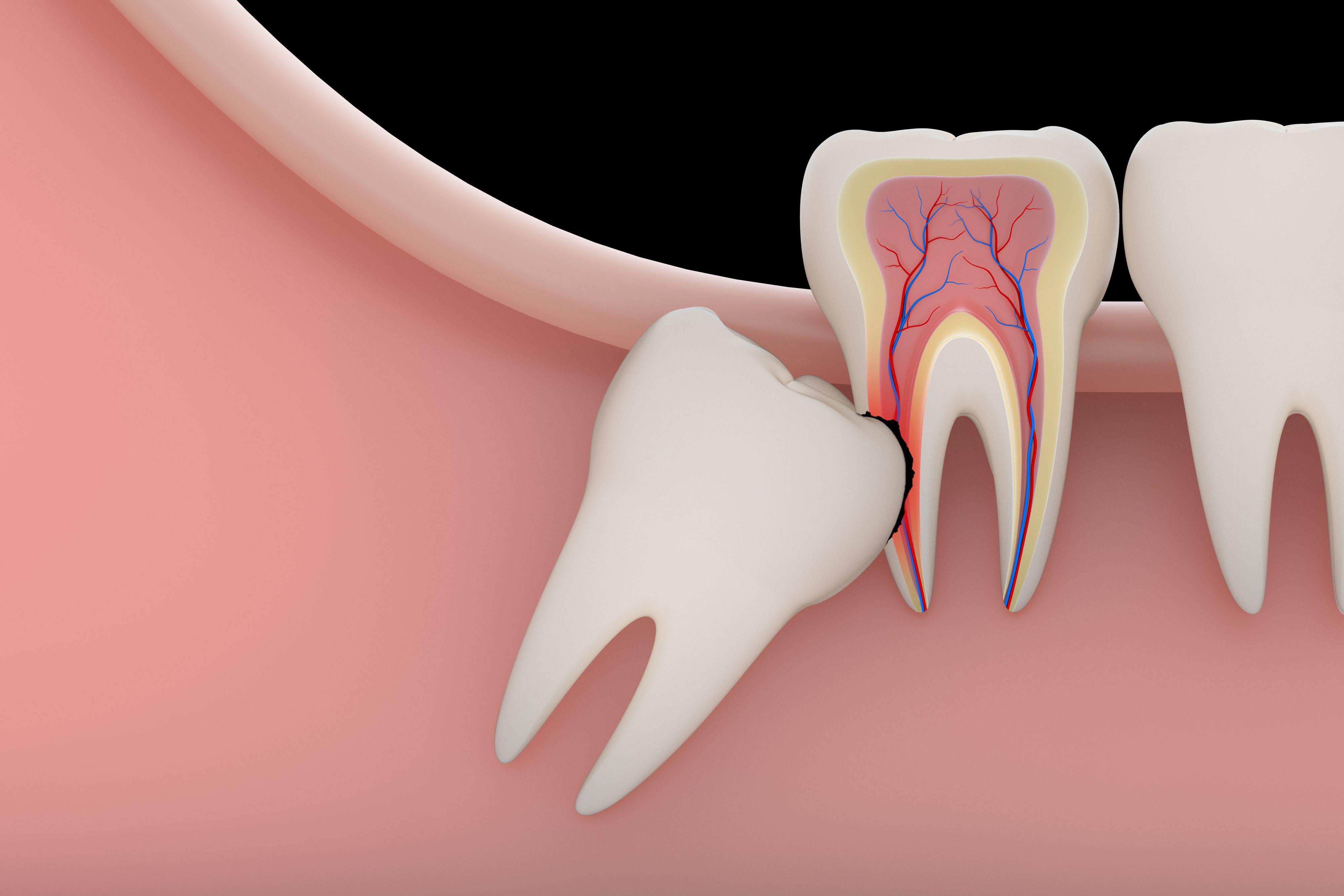Tooth impaction occurs when a tooth is unable to emerge fully through the gums into its normal position in the dental arch. This can happen for various reasons, and impacted teeth are often a common issue with wisdom teeth (third molars). However, other teeth, such as canines and premolars, can also become impacted. Here are key points related to tooth impaction:
TOOTH IMPACTION

Reasons for Tooth Extraction:
Severe Decay or Damage: When a tooth is extensively decayed or damaged and cannot be restored with fillings, crowns, or other dental treatments.
Gum Disease: Advanced periodontal disease that has resulted in significant bone loss around a tooth may necessitate extraction.
Impacted Wisdom Teeth: Wisdom teeth, also known as third molars, may be extracted if they are impacted (unable to fully emerge from the gum) or causing pain and crowding.
Orthodontic Treatment: Tooth extraction may be part of an orthodontic treatment plan to create space for proper teeth alignment.
Infection: A severe infection that cannot be adequately treated with antibiotics or root canal therapy may require extraction.
Crowding: Extraction may be recommended to address overcrowding of teeth, especially in cases where there is not enough space for all teeth to properly align.
Types of Tooth Extraction:
Simple Extraction: This is performed on a tooth that is visible above the gumline. The dentist or oral surgeon uses forceps to grasp and remove the tooth.
Surgical Extraction: Surgical extraction is more complex and is often required for impacted teeth or teeth that have not erupted. It may involve making an incision in the gum to access the tooth.
Preparation for Extraction:
Dental Examination: Before extraction, the dentist conducts a thorough examination, which may include X-rays, to assess the tooth and surrounding structures.
Medical History: The patient's medical history is reviewed to identify any conditions or medications that may impact the extraction procedure.
Local Anesthesia and Sedation:
Local Anesthesia: A local anesthetic is administered to numb the tooth and the surrounding area, ensuring the patient is comfortable and feels minimal pain during the procedure.
Sedation: Depending on the complexity of the extraction or the patient's anxiety level, the dentist may recommend sedation, ranging from nitrous oxide (laughing gas) to oral sedatives or intravenous (IV) sedation.
Extraction Procedure:
Simple Extraction: The dentist uses forceps to loosen the tooth and then gently removes it from the socket.
Surgical Extraction: An incision may be made in the gum to access the tooth. In some cases, the tooth may need to be sectioned into smaller pieces for easier removal.
Post-Extraction Care:
Gauze Placement: After extraction, a piece of gauze is typically placed over the extraction site to control bleeding and promote blood clot formation.
Pain Management: Over-the-counter or prescription pain medication may be recommended to manage post-operative pain.
Ice Packs: Applying ice packs to the cheek can help reduce swelling in the first 24 hours after extraction.
Avoiding Certain Activities: Patients are often advised to avoid vigorous physical activity, smoking, and certain foods to facilitate healing.
Follow-Up Appointments:
Healing Check: The dentist may schedule a follow-up appointment to check the healing progress and remove any stitches if necessary.
It's important for patients to follow the post-operative instructions provided by their dentist to minimize the risk of complications and promote optimal healing. If there are any concerns, such as excessive bleeding, severe pain, or signs of infection, patients should contact their dentist promptly.
